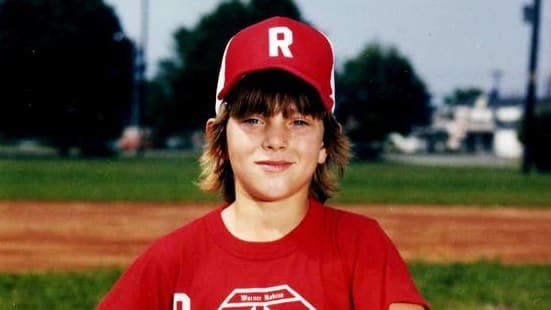Chuckie Mauk Shot and Killed While Riding His Bike in Warner Robins Georgia
Charles “Chuckie” Mauk was a thirteen-year-old boy growing up in Warner Robins, Georgia, during the mid-1980s. Known affectionately as “Chuckie,” he was remembered by family, friends, and classmates as energetic, adventurous, and kindhearted. He enjoyed riding his bike around the neighborhood, playing outdoors, and spending time with friends. His youthful smile and friendly manner made him well liked in the community.
Chuckie was at the age where he was beginning to enjoy a bit of independence. Like many kids in Warner Robins, a city closely tied to Robins Air Force Base and the culture of small-town Georgia, he could ride his bicycle to nearby shops or convenience stores without his parents worrying too much. The community had a reputation for being safe, where children could still roam relatively freely. That sense of safety would be forever shattered by the events of February 1986.
The Day of February 17, 1986
On the evening of February 17, 1986, Chuckie rode his bicycle to a nearby convenience store located off Russell Parkway. He wanted to buy gum, a small treat that was part of his after-school routine. It was a mild evening, and many residents in the area were out and about. For Chuckie, it seemed like an ordinary trip, one that countless kids made in neighborhoods across the country.
Around 8 p.m., Chuckie left the store and began riding his bike home. Witnesses reported seeing him in the company of an unknown man in his early twenties. The man was inside a white or light-colored car, possibly a Buick. Chuckie was observed speaking with the driver near a parking area behind a local restaurant. Moments later, gunfire erupted. Chuckie was shot once in the head at close range.
The Discovery
After the gunshot, several witnesses reported seeing a car speed away from the area. When others rushed to the scene, they discovered Chuckie lying on the ground near his bicycle. In one hand, he still clutched the pack of gum he had just purchased. At first, some thought he might have been struck by a car, as the call to police initially came in as a possible hit-and-run accident. But when emergency personnel arrived, it became clear that this was no accident—Chuckie had been shot.
The suddenness and brutality of the crime stunned both first responders and the neighborhood. A thirteen-year-old had been gunned down in a community where such violence was virtually unheard of. Parents rushed to their children, horrified at the thought that a killer might still be nearby.
The Initial Investigation
Police immediately launched an investigation. They canvassed the area, interviewing witnesses who had seen Chuckie talking to a man in the white or light-colored car. Several people remembered the car speeding away right after the gunshot rang out. Detectives collected physical evidence from the scene, including the bicycle, the pack of gum, and the shell casing from the fatal bullet.
The initial focus of the investigation was on identifying the vehicle and its driver. Witnesses described the suspect as a white male in his twenties. The car was described as a white or off-white Buick, possibly with distinctive features, but no license plate was recorded. Despite the urgency and wide net cast by investigators, no immediate arrests were made.
Community Response
The murder sent shockwaves through Warner Robins. Residents were terrified and grief-stricken. Vigils were held, and children were kept inside after dark. Parents who had once allowed their kids the freedom to ride bikes to the store now accompanied them or prohibited such trips entirely.
The local press covered the case heavily, with front-page headlines asking for help and tips. Television news across central Georgia carried nightly stories about the tragedy, urging anyone with information to come forward. Churches held special services in Chuckie’s memory, and his schoolmates were counseled by teachers and staff struggling to make sense of the senseless.
Dead Ends and Frustration
Despite the intensity of the initial investigation, leads dried up quickly. No suspect was ever arrested in connection with Chuckie’s murder. The description of the car and driver remained frustratingly vague. While several people came forward with tips, none led to a concrete identification.
As months turned into years, the case grew cold. Detectives continued to revisit the file, re-examining witness statements and rechecking evidence, but the lack of new information left the community disheartened. For Chuckie’s family, the pain was unending. They not only had to live with the grief of losing their son, but also with the torment of knowing his killer had never been caught.
The Legacy of Fear
The impact of Chuckie’s death extended far beyond his immediate family. The Warner Robins community was forever changed. Parents became more protective, children more cautious. The idea that a young boy could be lured into conversation and killed so close to home shattered the sense of innocence that had characterized the town.
Chuckie’s murder became one of the most notorious unsolved cases in Georgia. His name was spoken in hushed tones, a reminder of the dangers that can exist even in seemingly safe neighborhoods. For decades, the case remained open but unsolved, lingering in the files of the Houston County authorities.
Renewed Attention Decades Later
In the years since, Chuckie’s case has periodically returned to the spotlight. True crime television programs, newspaper retrospectives, and podcasts have retold the story, hoping to reach someone who might remember a critical detail. In some instances, renewed attention has brought forward fresh tips, though none have yet cracked the case.
One of the most notable efforts came more than three decades later, when a childhood friend of Chuckie’s funded a private reward of $100,000 for information leading to the arrest of the killer. The large reward generated headlines across the state and was intended to shake loose old secrets or motivate someone with knowledge to finally come forward. Law enforcement welcomed the renewed interest, emphasizing that the case remained open and that justice was still possible.
The Witness Accounts
Witness testimony has always been the cornerstone of the case. Multiple individuals confirmed that Chuckie was last seen speaking with a man in his twenties, sitting in a white or light-colored car, shortly before the shot was fired. The man was described as clean-cut, though details about his appearance varied slightly.
The car description, too, remained a focal point. Some witnesses said it was a white Buick, while others believed it could have been another model of light-colored vehicle. Regardless, all agreed that the car sped away at high speed after the shooting, disappearing into the night.
Investigators have long believed that the man in the car was directly connected to Chuckie’s murder, but without a name or license plate, they struggled to identify him.
The Cold Case Efforts
Over the decades, cold case investigators have reviewed the evidence multiple times. Advances in forensic science have prompted re-examination of ballistic evidence and any preserved biological materials, though the public record has not disclosed significant breakthroughs.
Detectives have also used new technology to reconstruct the timeline, review geographic data, and compare the case to other unsolved crimes from the same era. Despite these efforts, the identity of the killer remains unknown.
Chuckie’s Enduring Memory
Though Chuckie’s life was tragically cut short, his memory lives on through family, friends, and the community of Warner Robins. His case is often cited when discussing child safety and the importance of vigilance in protecting young people from predators. For many, Chuckie represents not just a life lost, but a childhood destroyed, a reminder of the fragility of innocence.
In Warner Robins, older residents still recall the fear that spread after his death, and younger generations learn of his story as a cautionary tale. His name remains etched into the collective memory of central Georgia.
Conclusion
The shooting death of Charles “Chuckie” Mauk on February 17, 1986, in Warner Robins, Georgia, remains an unsolved mystery nearly four decades later. A thirteen-year-old boy was shot once in the head, his body left by his bicycle, while the killer sped away into the night. Despite eyewitnesses, community support, and years of investigative work, the case has never been closed.
For his family, friends, and the community, the pain has not faded. They continue to seek answers, clinging to the hope that someone, somewhere, knows the truth. The $100,000 reward, the renewed attention through media, and the perseverance of investigators ensure that the case is not forgotten.
Chuckie’s death stands as a reminder of both the cruelty that can strike without warning and the resilience of those left behind. Until justice is served, his story will continue to echo through Warner Robins and beyond.
Discover more from City Towner
Subscribe to get the latest posts sent to your email.





I lived in Warner Robins, GA when this happened. It scared everyone. But it also made us mad. This does not happen in our town. Your kids could walk to the recreation dept and library without being afraid. The bigger Warner Robins gets, the more things are going to start happening. I am glad people are finding their home here, but what else are we getting. All our trees are being cut down. I am sorry I am getting off the main subject of this young boy, I just long for the town it used to be. But life changes. Pray for our city that the people remain strong in their belief and show kindness to our neighbors. May God Bless you all